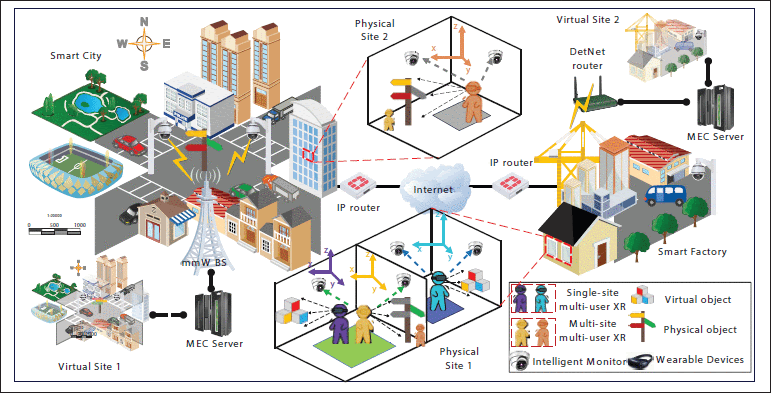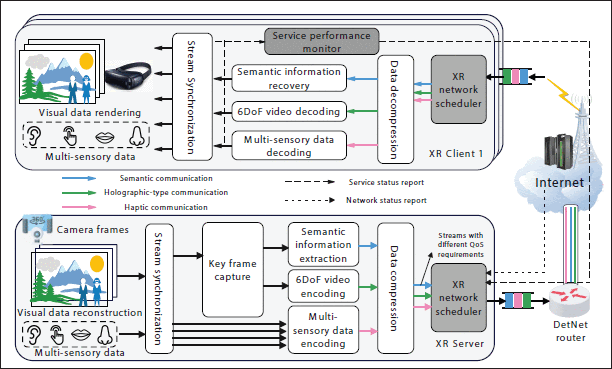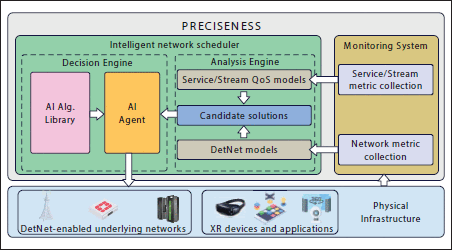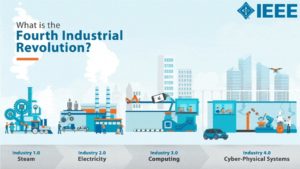Forming the next evolution of the Internet—the Metaverse is the concept of a fully immersive and universal virtual space for multi-user interaction, collaboration, and socializing. This concept of a blended shared space, whereby users can interact with each other in physical/virtual environments and extended reality (XR) in a seamless, immersive, and interactive way, has drawn enormous attention in both industry and academia.
Metaverse depends on the convergence of multiple broad technologies that enable eXtended Reality (XR), which is an umbrella term for technologies that lie on the reality-virtuality continuum, namely Virtual Reality (VR), Augmented Reality (AR), and Mixed Reality (MR). Multi-user XR puts additional demand on the underlying networks, making it more difficult to offer high-quality immersive material in real-time. In an article published in IEEE Network, researchers present a comprehensive system for immersive and seamless multi-user XR experiences for dealing with the additional demand.

Different communication scenarios for Multi-user XR enabled Metaverse.
Enabling Technologies for Multi-User Xr
XR platforms provide immersive user experience by creating distinct artificial digital environments in which users feel immersed and behave in the same manner as they would in real life or superimposing digital things into the real world to provide consumers access to more interesting information. The authors outline several technologies that are prominent in relation to the Metaverse and XR-centered applications:
- 5g and Beyond: With high-capacity access technologies, users will be able to connect through the Metaverse in a more natural and intuitive manner, with less lag and a higher level of interactivity.
- Compute-First networking (CFN): Through real-time monitoring of computing and networking resources, the CFN system can immediately adapt to changes in accessibility, availability, or quality of computing capacity in the networks. As a result, more resources can be activated, and their utilization will increase.
- Semantic Networking: This paradigm focuses on the WHAT of requests rather than the WHERE (the final destination). Instead of controlling requests individually, the focus will be on a set of semantics. Consequently, a relatively smaller set of rules must be adjusted based on resource changes or end-user dynamics.
- Adaptive AI: Anticipated to be one of the most critical enablers for the delivery of emerging services, such as Metaverse and XR applications. Adaptive decision-making algorithms are essential to realize future self-sustaining Metaverse use cases, especially for XR-related scenarios.
Multi-User Xr Collaboration
Multi-user XR collaboration refers to bringing together groups of people for remote activities, such as meetings, conferences, design reviews, and classroom sessions using XR devices and technologies. Individuals and organizations can now communicate in a much more visceral and connected manner, engaging a larger sense of physical presence. The authors propose an end-to-end architecture to support the seamless, immersive multi-user XR services.

Illustration of components for the multi-user XR system.
At the XR server, after being captured, different media streams will be synchronized in advance for further processing. Before being emitted into networks, the streams will be prioritized by an intelligent network scheduler according to the QoS requirement levels of different types of streams. Adaptive AI will be applied in the scheduler to capture the ever-changing QoS/QoE requirements and dynamic XR users, ultimately realizing the self-sustaining XR services.
According to the authors, Quality of Experience (QoE) models reflect “the degree of delight or annoyance of the user of an application or service” by developing subjective and objective quality metrics. Such metrics include frame rate, resolution, field of view, latency, and multimodal experience. Quality of Service (QoS) evaluates the network performance from the engineering system perspective, including high bandwidth requirements, low latency requirements, and stream synchronization.
Introducing PRECISENESS
By leveraging XR technologies, Metaverse can change how people work, learn, entertain, and socialize. To enable the multi-user XR collaboration scenarios and support the XR/Metaverse over the 6G communication networks, technologies should facilitate multimedia data transmission and interaction between multi-users in a deterministic way. To accomplish this, the authors propose PRECISENESS: an AI-emPoweRed dEterministiC multiuSer ExteNded rEality reSource orcheStrator to handle multi-user XR applications for the Metaverse.

The conceptual management framework of the proposed PRECISENESS framework.
The article outlines the case study that demonstrates the effectiveness of PRECISENESS by carrying out continual learning in a single-site, multi-user XR scenario. The findings advocated for the effectiveness of the proposed approach in supporting the delivery of high-quality immersive XR services. In the future, the researchers plan to investigate incorporating multiple IoT data streams combined with XR video content to provide a multimodal XR service experience with the proposed intelligent orchestrator.
Interested in acquiring full-text access to this collection for your entire organization? Request a free demo and trial subscription for your organization.
Interested in expanding your knowledge on the Metaverse? IEEE offers continuing education with the Practical Applications of AR/VR Technology course program to smartly implement digital tools into your organization.





